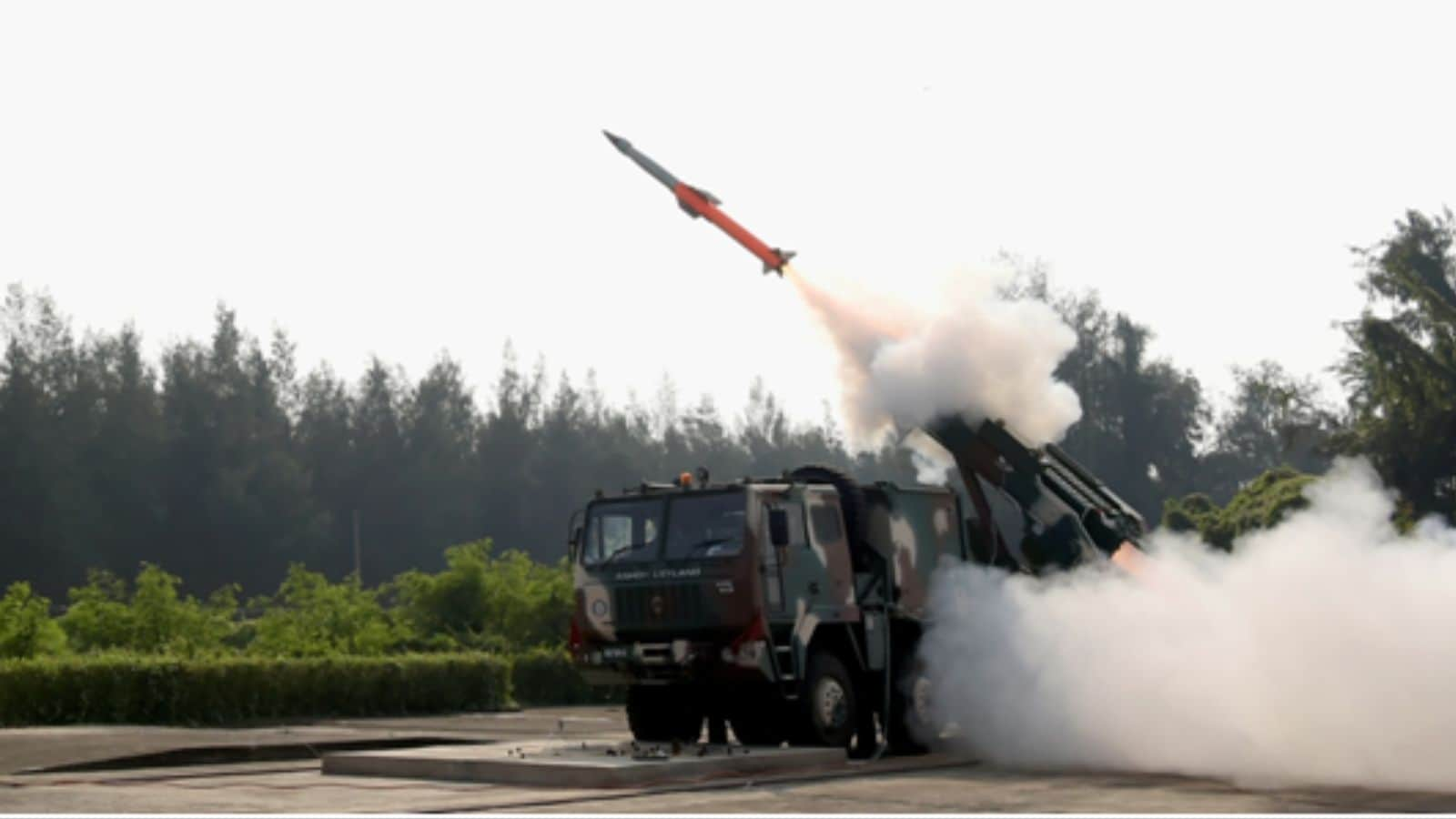The car cannot proceed any further. On its way from the Narayanpur district headquarters to Garpa, a village in the district’s interiors, the vehicle is forced to an abrupt stop nearly 15 km before the destination. The sedan, built for city roads and a comfortable commute, cannot navigate through a muddy murum (red gravel) pathway. Earth movers, trucks, and tractors pass by. Garpa, like many other villages in the Bastar region of Chhattisgarh, was inaccessible to the district administration until last year, because the Maoists controlled it.
Inside the car is Mahru Potai, the secretary of the Garpa village panchayat and its main link to Chhattisgarh’s administration. During the commute that takes over an hour, he has been discussing the incremental changes in mainstreaming Garpa and other villages that dot this stretch of the road that runs through the Abujhmad forests. In Bastar, Maoists have been in conflict with the Indian state for the past five decades.
Potai throws out a quip about the irony of getting stuck, considering Maoists no longer blockade roads but nature can. He discusses the gains made by the improved security situation and the impediments that remain “just like this obstruction”.
This pathway — which will serve as a base for a pucca road to link Narayanpur with Kanker districts — has come up after a security camp was established here six months ago. Its construction has cut down Potai’s daily commute on a bike from nearly five hours to two, and has also helped villagers access services and benefits that they would earlier miss out on or not demand in fear of the Maoists. There are now five pockets of government access to people, and the administration calls these areas “accesses”.
The largely tribal administrative division of Bastar comprises seven districts, including Narayanpur. It is here that security forces have mounted an aggressive campaign, gunning down over 425 alleged Maoists since December 2023. Earlier in 2025, Home Minister Amit Shah had said on social media that all Naxals would be ‘eradicated’ by March 2026.
Left-wing extremism began in India in 1967 with the communist-inspired peasant uprising against feudal landlords in Naxalbari, West Bengal. Later, the movement extended to other areas in eastern and central India, and these areas came to be called the Red Corridor. The Naxal cause expanded itself to include all kinds of oppression, including what they saw as a usurping of tribal rights by mining corporations.
An ‘uphill’ task
Narayanpur comprises two blocks: Narayanpur and Orchha. Orchha, of which Garpa village is a part, is geographically more spread out but the population is just around 41,000, say people from the administration. Out of 377 villages, 133 are still inaccessible to them. A family living in one of the difficult-to-reach villages must walk four days to a market for basic provisions. Distances are measured here in how many hills a person must cross to reach their destination. Officials say the upcoming population Census exercise will be an uphill task in these areas.
The terrain and scattered population makes reaching people expensive. “We have to utilise funds in a cost-effective manner. For example, the government is in a quandary to balance its financial and social obligations when residents of a village with a population as low as 10 families demand a new road that would cost around ₹1 crore for construction,” says Akancha Siksha Khalkho, the Zila Panchayat Chief Executive Officer of Narayanpur district.

In Narayanpur district, 133 villages are still inaccessible to the government because of its rough terrain. | Photo Credit: SHUBHOMOY SIKDAR
The ‘Niyad Nellanar’ scheme of the Chhattisgarh government aims at enhancing basic facilities and welfare benefits in a 10-km radius of the new camps set up in the Maoist-affected areas. The word ‘camp’ means two different things in Bastar: one set up for security, where the jawans of the forces live; another, tents and counters set up temporarily for people to avail themselves of welfare schemes. When the first is established, the second follows.
The welfare camps have a carefully thought-through action plan. “We have to be very cautious about choosing which people will be acceptable inside because we cannot compromise lives. For example, the Health Department and the Forest Department people go in because they have been dealing with the villagers in the past too,” says Niharika Barik Singh, Principal Secretary for both the Department of Panchayat and Rural Development of the State government. Her department coordinates the delivery of the Niyad Nellanar scheme.
Niyad Nellanar covers all eligible beneficiaries of State government schemes, at both the individual and community level.
Delivering these in hitherto ungoverned areas poses multifold challenges, says Potai.
“Take a cash assistance scheme such as the Mahtari Vandan Yojana, under which women are eligible for ₹1,000 every month. But they have to go to Narayanpur 52 km away on a bus that will cost them ₹200 to and fro. There is a provision of sending the money to the nearest post office but that circles back to the need for a mobile phone, which many here won’t be able to afford,” he says. The bus service is new too, so villagers are not used to taking it yet.
The road less travelled
In another part of Narayanpur — that accounts for 60% of Abujhmad or Maad, a dense, unsurveyed forested area spread across Bastar and Maharashtra’s Gadchiroli — lies Kasturmetta village. Here, a Dharti Aaba Janjatiya Gram Utkarsh Abhiyan (DAJGUA) camp is being held on the weekly haat or market day, when people are expected to converge. The DAJGUA offers 25 Central government schemes spread across 17 ministries.
Kasturmetta is on another “access” where new camps have been set up. Its strategic importance lies in the fact that the camps built from east to west in the past one year connect Narayanpur to Maharashtra via the 130D National Highway and divide the district horizontally. On July 16, the bids for road construction on the last stretch from Kutul to Nilangur on the Maharashtra border (where the last camp is located) were opened, according to the National Highway Authority of India website.
To the south of Kasturmetta are still security vacuum areas. It was in this vacuum area that Nambala Keshava Rao alias Basavaraju, general secretary of the banned CPI (Maoist), was gunned down by security forces in Chhattisgarh on May 21. It was seen as one of the biggest successes against left-wing extremism in the country.

Various departments of the Central and State governments set up camps in the weekly markets to offer services or schemes | Photo Credit: SHUBHOMOY SIKDAR
The Kasturmetta camp is the second such in the district where various departments have set up their booths. Men in lungis, women carrying babies, the elderly holding axes, engage in discussions with officials. The place is abuzz with activity but officials expected a better turnout.
“The target population is nearly 1,500, with residents from villages in 5-10 km expected to come here. We expected 500 at least, but only 100 have come. Lack of awareness, fear, all play a part,” says Lokesh Sharma, the Janpad (a government officer) CEO. The sowing season also keeps some away. Though many parts have camps, they are still sensitive, from a security point of view.
Those who have come stand to gain, he notes. Sonmati Podiyami, who is from the Particularly Vulnerable Tribal Group, Abujh Maria tribe, says, “I have come walking from Kalmanar Panchayat. My house is far (4-5 km). I’m here to get an Aadhaar card for my newborn’s birth certificate.”
Learnings from camps
Once government employees began meeting people, they realised that there was little demand for schools. There was, however, demand for rations, health facilities and houses under the Pradhan Mantri Awaas Yojana-Rural.
Brick-and-mortar houses are not easy to build here. Rajesh Usandi, 32, a farmer, says he has applied for a house and received the first instalment of the total ₹2 lakh that the government provides as assistance. “But the challenge is getting the construction material from Narayanpur. Seven tractor trips have to be made, and each trip costs ₹3,000. This takes away nearly half the assistance amount in transportation,” he says.
Availability of skilled labourers is another issue. Bastar Inspector General P. Sundarraj says that among the skill development programmes being run for the surrendered Maoists, there are plans to introduce construction and telecom tower-building training programmes so that what they learn during rehabilitation is more relevant to the region. At and around the haat next to the camp on a cloudy monsoon afternoon, the smell of mahua lingers. A group of youth address each other with a laal salaam (red salute) and then cordially chat with a security forces soldier in uniform.
The making of an Aadhaar card
For regions that have been outside the government’s purview, and yet have been receiving rations and some rudimentary health services, some challenges are unexpected enough to stump officials. Khalkho shares one instance where, in some interior villages, people had an aadhaar card made in 2011-12, but don’t have the document. “Now when we try to make their aadhaar to allow them access to other facilities, we find a duplication problem. We send them to the UIDAI portal to remove the anomaly, but the process may take anywhere from four to six weeks, delaying everything else,” she says.
Another problem is connectivity. “Garpa and the areas beyond are non-electrified and the telecom network connectivity is either poor or non-existent. In one particular case, we had to ferry almost an entire village on a tractor 25 km to get through the process,” Potai says.

The last electrified village en route to Garpa village. | Photo Credit: SHUBHOMOY SIKDAR
Among the greenshoots, Khalkho says, is people themselves coming forward to ask for services and assert their rights, shedding the fear instilled by the Maoists. “Late last year people had come from Thulthuli. It was near the area where the encounter in which 38 Maoists were killed last year. They were looking for work under the NREGA scheme,” she says.
She says the government sanctioned a pond construction in June. “We asked them if there would be a problem if our [administration] people visited these villages, and they asked us to make any contact through the local Sarpanch. Initially, they had to take permission from the Maoists to get any sanction; then there was a vacuum after the encounter. It took a few months for them to finally approach us,” says Khalkho.
Edited by Sunalini Mathew



.png)
.png)
.png)
















 11 hours ago
8
11 hours ago
8








 English (US) ·
English (US) ·